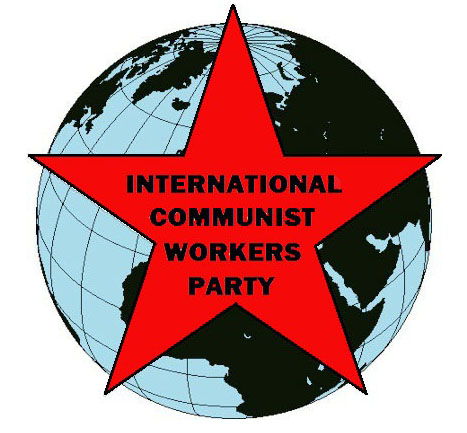
 |
FIGHT FOR COMMUNISM! |
International Communist Workers Party | |
If we were foolishly to believe the New York Times, the Chinese Cultural Revolution (1966-1976) was one of the great crimes of the 20th century. In truth it unleashed millions to create some of the most advanced communist practice ever, in almost every part of society. Their legacy includes a treasure-trove of communist experience.
Much of our party’s line, outlined in Mobilize the Masses for Communism, is inspired by these masses. The ruling class (including today’s Chinese bosses) wants to drown out their clarion call. Our party wants to amplify it!
Tens of millions took part in the Cultural Revolution. It started when Mao Zedong launched a mass struggle against open capitalist-roaders within the Communist Party leadership. In the course of this battle, huge forces emerged that broke through the limits of the original fight. They attacked the “bourgeois right” on every front.

Crimes against the Bourgeois Right
So let’s list some of these “crimes.”
Students rose up against “bourgeois education.” They demanded communist education. Masses praised education through work and acted upon this conviction.
“Our school must not be run like the old bourgeois-dominated schools, which caused our sons and daughters to degenerate into good-for-nothings unfit for manual labor,” insisted some tea-growing peasants.
Millions fought for communist health care. They admired the legacy of the “barefoot doctors” who came from farmworker brigades. Each year they were trained for six months in the cities. The other six months, they worked alongside their friends in the fields.
Inspired by the Cultural Revolution, the surgeon Joshua Horn described his first-hand observations of communist health care from 1954-1969. His book Away With All Pests is still read around the world. We recommend it.
Horn described the mass campaign against schistosomiasis. Mobilized millions dug up the snails that carried the disease. They ended the plague that had sickened and killed tens of millions.
Industrial workers experimented with a new type of production center. Anshan Steel workers created a set of principles known as the Anshan Constitution. Workers could not be fired. Their income was stable and set by national standards.
Workers participated in plant decisions; managers participated in productive labor. Workers had a complete right to criticize all management openly. The decision-makers became those who did the work. However, the Anshan Constitution stopped short of abolishing the wage system.
Tonghua Steel Factory workers spearheaded the attack on material incentives. They thought that getting extra pay was short-sighted individualism. Collective responsibility motivated them.
This set up one of the fiercest practical and ideological battles of the Cultural Revolution. Millions fought to bring back the Red Army’s “supply system.” The Red Army fought for decades and eventually defeated the Japanese imperialists and the Chinese capitalist Kuomintang army.
The supply system was based on the communist principle “from each according to commitment and ability, to each according to need.” In the words of the Shanghai Commune, it “put politics in command.” Communist collectivity motivated these soldiers. There was no rank or privilege.
“The Red Army abolished hired work,” wrote Zhang Chunqiao, publisher of the Shanghai newspaper Liberation. “Communist relationships [like the supply system] established the model for the relationships inside the revolutionary base areas.”
Many Army veterans led the fight to end the wage system during the Cultural Revolution. In their own words, wages put “money in command.” Our party continues their fight today as we mobilize the masses for communism and nothing less.
Such are the crimes against “bourgeois right” that the bosses hate and fear. We workers should not fear them. When the Chinese masses put communist ideas into practice, they taught us all important lessons about what communism is really about.
Mass Uprising for Communism
Mao considered some of the communist proposals to end the wage system, but quickly rejected them. Both he and his openly pro-capitalist opponents faced a mass uprising for communism.
This mass uprising forced both sides to divert attention from their own defense of “bourgeois right” by sacrificing minor players. This led to a lot of attacks on relatively innocent people. Fifty years later, the bosses focus on this aspect to discredit the whole Cultural Revolution.
But facts are stubborn. The Cultural Revolution was the first mass struggle against revisionism (capitalism wrapping itself in a red flag). It created material examples of actual communism.
The grass-roots communists were eventually defeated. They lost mainly because of their own weaknesses, not because of the vicious government attacks on them. They mistakenly trusted in Mao’s leadership instead of forming a new party to fight directly for communism. But they left a rich legacy that can inspire masses to mobilize for communism now.